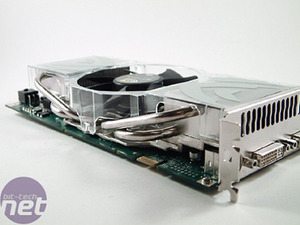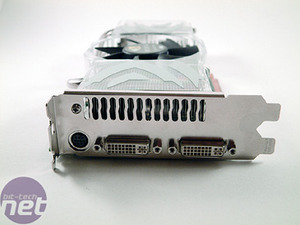

The weapons are drawn...
Back in June, NVIDIA successfully hard-launched the GeForce 7800 GTX 256MB and was left dominating high-end sales with no sign of ATI's R520 hitting the shelves before the end of the summer. In fact, it took ATI until the 5th October to announce a competitor to GeForce 7800 GTX, in the form of Radeon X1800XT, but it is only just starting to ship now.When we were out in California learning about GeForce 7800 GTX, NVIDIA's CEO and Founder, Jen-Hsun Huang, stated that he didn't like being second choice and wanted to win the enthusiasts crowd back. He did that pretty well with GeForce 6-series, by offering comparable performance to ATI's Radeon X800XT PE and a more attractive feature set.
It was questionable whether that additional feature set was useful, but when the Crytek released the Far Cry 1.3 patch, it gave NVIDIA's faithful something to marvel over: the wonders of High Dynamic Range lighting. Of course, it was possible to do High Dynamic Range lighting with all video cards supporting Shader Model 2.0 and higher, but games using those techniques - including the likes of Splinter Cell: Chaos Theory (with the 1.04 patch), Half-Life 2: Lost Coast and Day of Defeat: Source - didn't follow until well after the Far Cry patch.
GeForce 7-series expanded and improved on the GeForce 6 feature set, adding improved FP16-blend (HDR) performance, higher quality Anti-Aliasing, and an optimised pixel shader pipeline too. To aid the instant success of GeForce 7 and its hard launch, ATI were experiencing soft grounding issues with R520, causing massive delays to the product launch with several respins at the foundry.
We've reviewed both the Radeon X1800XL and Radeon X1800XT 512MB, finding them both to be very good, competitive video cards, but coming with pricing and availability question marks. The prices are becoming competitive, and availability of Radeon X1800XL is pretty good. However, there are questions about the ability to get enough Radeon X1800XT's onto the shelves of retailers in order to cope with the demand.
Today we are looking at NVIDIA's response to the Radeon X1800XT 512MB, which goes by the name of GeForce 7800 GTX 512MB. It's questionable whether this is a direct competitor to the Radeon X1800XT 512MB based on MSRP, or whether it is just a case of keeping the performance leadership until ATI makes the next move.




We have seen the heatsink design before on Leadtek's PX7800 GTX TDH Extreme. It's a dual slot heatpipe cooling solution with a copper base. The fins on the heatsink cover most of the video card and has a 92mm fan located above the core, blowing air across the fins in both directions. As with the Leadtek Extreme Edition, there is still the black heatsink covering the power regulation circuitry underneath the end of the cooler.
The fan is pretty quiet; however, we did notice some strange humming coming from the video card. We have asked several other publications about this and there was a varied response - some have experienced it in some situations, but some haven't experienced it at all. We feel that it might be a sample specific problem related to power regulation, as we didn't hear anything of the sort when we reviewed the Leadtek PX7800 GTX TDH Extreme last month.


As some of the hot air from the heatsink is pushed towards the back of the video card, the back plate has a grilled exhaust so that air can be exhausted from the chassis. There are also two DVI ports with a single Dual-Link DVI TMDS transmitter and a HDTV-Out port for good measure.

MSI MPG Velox 100R Chassis Review
October 14 2021 | 15:04





Want to comment? Please log in.